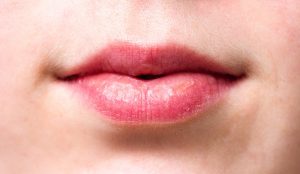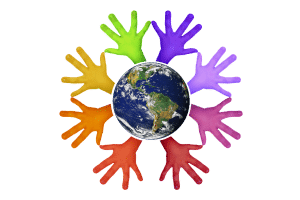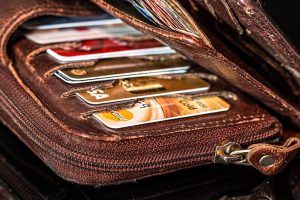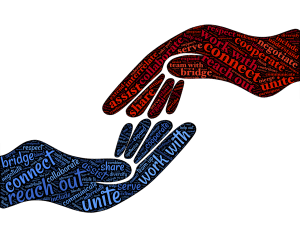Way back in 2018, in the “before times,” someone coined a word in a Twitter post. The tweet didn’t get much attention and was only retweeted by two people, but we were all destined to hear the word over and over again after the arrival of the coronavirus pandemic. The word? “Doomscrolling.” This term has become so widely used (and the practice has become so widespread) that Merriam-Webster has even placed it on their “words we’re watching” list, meaning it could soon be an official dictionary entry. For now Webster describes the term as “the tendency to continue to surf or scroll through bad news, even though that news is saddening, disheartening, or depressing.” Sound familiar? Yeah, for us, too. Think it’s good for you? Nope, we didn’t think so, either. So why do you do it and how can you stop?
Why We Can’t Quit the Doom and Gloom
Have you found yourself turning more and more to social media in the last year and a half? If so, you’re not alone. Twitter’s daily use numbers have jumped 24% since the start of the pandemic, while Facebook’s numbers are up 27%. Now, we’re not saying that everyone on those platforms is constantly doomscrolling, but there sure is a lot of negativity to soak up on social media and in the news cycle, and many of us are eagerly consuming it. Do the words of this self-described doomscrolling addict apply to you? Last year, in an online editorial, Elaine Roth wrote, “Every morning I wake up and press refresh on the websites that track the number of positive COVID-19 tests in my town and state. Then I move to the news and read every word of every article that is no doubt pointing to the end of the world.” Even if there is a very bright light at the end of the tunnel regarding Covid, the cycle of bad news can seem never ending, and it might be that we’ve become addicted to the doom and gloom. And there are actually strong psychological and even evolutionary reasons for this; the addition of addictive, modern technology like smartphones is simply allowing us to indulge more easily in our darker tendencies. Why do we doomscroll?
Even if there is a very bright light at the end of the tunnel regarding Covid, the cycle of bad news can seem never ending, and it might be that we’ve become addicted to the doom and gloom. And there are actually strong psychological and even evolutionary reasons for this; the addition of addictive, modern technology like smartphones is simply allowing us to indulge more easily in our darker tendencies. Why do we doomscroll?
- The psychological factor: The last year and a half has been exhausting, am I right? A pandemic, social unrest, a nail-biting election, and on and on. All of this has left many of us, well, a little battered psychologically. In fact, late last summer, the CDC reported that nearly 41% of U.S. adults have symptoms of at least one adverse mental or behavioral health condition, including anxiety. And according to psychotherapist Tess Brigham, “anxiety is about control or the lack of control…The more anxious we feel, the more we try and control the situations and people around us. Being informed seems like a good way to control what’s happening around us, but it actually just creates more anxiety and fear.” She points out, “People doomscroll for many different reasons. The main reason is as a way of feeling in control in a world that feels so out of control all the time.”
So, it’s possible that some people are doomscrolling in order to give themselves a (false) feeling of preparedness: the old, “if I can see it coming, I’ll be ready for it” mindset. For others, it might simply be a strangely comforting confirmation of their feelings. According to psychologist Susan Albers, PsyD, “If you’re depressed, you often look for information that can confirm how you feel. If you’re feeling negative, then reading negative news reconfirms how you feel. It’s the same mindset.”
- The evolutionary factor: Remember learning about the “fight or flight” instinct? You know, the one that helped humans back in the day run from predators, and can still help us if we’re in a dangerous situation? Well, that response could partially explain why we need to stay on top of all that bad news. Again according to Tess Brigham, “We are hardwired to survive and to see the things that could potentially harm us. That’s in our DNA and our ancestors needed this ability in order to literally survive. While our world is very different, we still have this drive to keep ourselves safe which we think we’re doing by reading negative news stories.”
All of the above helps to explain why we do it, even if we know it’s not good for us. So what exactly is doomscrolling doing to us?
The Effects of Non Stop Negativity
While doomscrolling as a pastime is relatively new (simply because we’ve only had social media and smartphones for a short amount of time in the grand scheme of things), researchers have actually been studying the effects of being bombarded with bad news for decades. And what they’ve found probably isn’t all that surprising: the more news a person consumes surrounding events like terrorist attacks and natural disasters, the more likely they are to suffer from depression, stress and anxiety. For example, a 2014 study surveyed 4,675 Americans in the weeks following the Boston Marathon bombings and found that participants who engaged with more than 6 hours of media coverage per day were 9 times more likely to be acutely stressed than those who only watched a minimal amount of news.
Another study in the 1990s in England found that, unsurprisingly, participants given negative news coverage to watch (as opposed to others who were given positive or neutral coverage), were more likely to feel more sad and anxious after the experiment. In addition, according to lead researcher Graham Davey, “It also had a knock-on effect. People [in the negative group] were more likely to worry about their own private concerns.”

And in a troubling study following the September 11, 2001 terrorist attacks, researchers found that TV exposure at the time of the attack was associated with post-traumatic stress symptoms two and three years later. “You didn’t have to live near the epicenter of the attacks, you could just as easily be in rural Alabama,” said Judith Andersen, a health psychologist at the University of Toronto in Canada who worked on the study. “It was dependent on how much media you consumed.”
All of those studies point to what we’ve assumed all along about doomscrolling: it’s most likely taking a huge toll on your mental health. Not only that, but the psychological impacts of doomscrolling can also come with some pretty serious physical effects. Remember the fight or flight instinct that could be keeping us glued to our phones? Having a response like this releases a rush of cortisol and adrenaline, which can make someone super strong, heighten their senses, or allow them to stay awake for long periods of time – but that’s in small doses. Releasing too much adrenaline and cortisol (which is, after all, the “stress” hormone) over a long period of time can cause burnout and even begin to affect your physical health. Stress like that over long periods has been linked to digestive problems, headaches, heart disease, weight gain, sleep issues, sexual side effects, and high blood pressure, among other things.
Ditch the Doomscrolling!
Sounds like it’s time to have a serious talk with ourselves about the doomscrolling. There’s nothing wrong with staying on top of current events – no one’s suggesting we all stick our heads in the sand! – but there has to be a balance. If you’re ready for a negativity intervention, try the following:
- Set limits – Some mindless scrolling is ok, but if you find that you end up going down a doomscrolling rabbit hole after a few minutes of checking on what your friends are up to, set a time limit. Try 20 minutes – and stick to it! In addition, avoid checking your phone immediately upon waking up, or right before bed.
- Be mindful – You don’t necessarily need to become a yogi and or start meditating (unless that’s what helps you), but at least be mindful when it comes to how your social media or news consumption is making you feel. Dr. Albers suggests, “Be mindful of how a particular article makes you feel as you are scrolling by it. Notice or observe the sensations in your body or your mind’s response to the news.” Are you feeling anxious or stressed? “This,” she adds, “is your body’s way of saying stop.” So you should listen and turn your attention to something else – preferable not on a screen.
- Slow your scroll – The human attention span is very short; try to increase your focus and concentration (and your ability to rationalize) by slowing down your scrolling. If you’re not speeding through the news you’ll also be more likely to read past the headlines, which are usually far more sensationalized than the content of the story warrants.

- Stop catastrophizing – “Catastrophizing” is when your brain automatically jumps to the worst-case scenario, and doomscrolling is the perfect way to engage in this supremely unhelpful practice. When you find yourself spiraling out of control and anxiety taking hold, take a step back and ask yourself what the most likely or realistic outcome of a situation actually is.
- Take time to unplug – Simplest way to take a break from the doomscrolling? Put down the phone, go offline and take time for yourself in other ways. As Quartz reporter Karen Ho suggested in a tweet, “Tonight was really long, confusing, and difficult. Why not take care of yourself and your mental health by turning off your phone, reading a book, and going to sleep early?” We’ll add to that list: try going for a hike, doing some exercise or spending time with loved ones.
- Be the positivity – Yes, you can try to engage more positively with the internet – hey, there’s no shortage of cats and babies doing adorable things out there! But you can also lift yourself up by being a force of positivity in the real world. Perform random acts of kindness, smile at people, help a friend, volunteer – whatever you choose to do, you could single-handedly restore your own faith in humanity, at least for a little while.
Bad news is nothing new: we all know that social media and the 24-hour news cycle didn’t invent negativity. That being said, how we engage with it, and how much of it we consume, has changed. But you can break the doomscrolling habit and improve both your mental and physical health! Stay informed, but focus on the things that you can be grateful for instead of the things to be anxious about, and you might find that you have a sense of optimism, even in unstable times. And don’t forget to spread that positivity around!


 In 2017 alone, for example, TYEF served over 2,600 kids, up from over 800 in 2014 and 1,200 in 2015. And what do they do to support trans children? They have an impressive array of services and programs that they offer, and they serve children all over the country. For parents of transgender and gender non-conforming children and youth, they offer supportive shared experience discussions, resources, guest speakers and more. For transgender and gender non-conforming kids, ages 2-18, they offer support group discussions, community-building and social activities. They also offer things like legal and medical council, as well as resources for educators. They even have a summer camp specifically for trans youth.
In 2017 alone, for example, TYEF served over 2,600 kids, up from over 800 in 2014 and 1,200 in 2015. And what do they do to support trans children? They have an impressive array of services and programs that they offer, and they serve children all over the country. For parents of transgender and gender non-conforming children and youth, they offer supportive shared experience discussions, resources, guest speakers and more. For transgender and gender non-conforming kids, ages 2-18, they offer support group discussions, community-building and social activities. They also offer things like legal and medical council, as well as resources for educators. They even have a summer camp specifically for trans youth. 

















